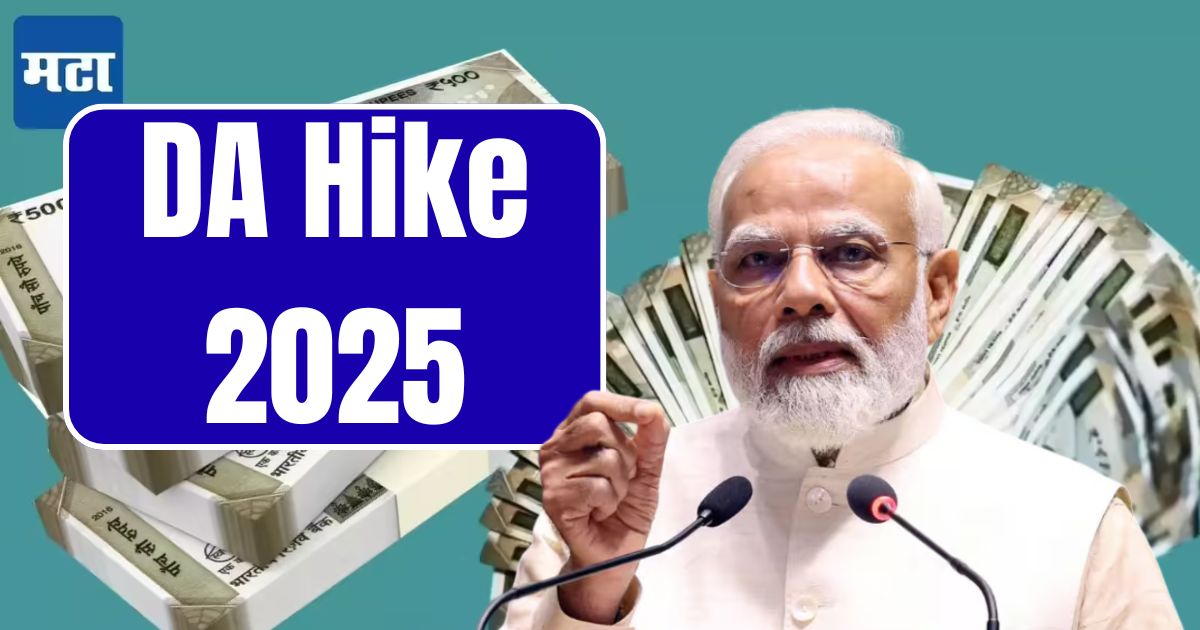Can you imagine that besides the presents, you also get a noticeably higher salary just in time for Diwali? That is the delight in the mood of the central government employees and pensioners today. The Cabinet of the Union government, on October 1, 2025, decided to grant a 3% Dearness Allowance (DA) increase, which made the fear of inflation a reason for the yearly 1.18 crore beneficiaries’ festivities.
Unpacking The Hike Key Details Revealed
This most recent change increases DA from 55% to 58% of the basic pay, going back to July 1, 2025. Union Minister Ashwini Vaishnaw has disclosed that it fits well within the 7th Pay Commission’s formula, which is based on the movements of the All India Consumer Price Index for Industrial Workers (AICPI-IW). Salaries for July to October will be paid this month, thus giving immediate relief to the employees.
The increase in DA is not a one-time event. It comes after a small 2% increase in March 2025, which had brought DA up to 55% for the month of January and onwards. With the inflation rate being around 5-6%, the government’s move of 3% can be seen as a compensatory measure for the increased cost of living, especially for the essentials like food and fuel. For employees, this means they are not just getting a little extra but also will have more to spend on their necessities.
Wallet Wins How Much Extra Cash Flows In
Let’s say an employee’s basic salary is ₹60,000 per month. After the DA increase, this person will receive ₹34,800 as a monthly allowance instead of ₹33,000 before the hike. The increase is ₹1,800 each month. For the entry-level employee, who draws a basic salary of ₹18,000, the increase is ₹540—just enough for an outing with the family or to pay utility bills.
| Basic Pay (₹) | Old DA (55%) | New DA (58%) | Monthly Gain (₹) | Annual Gain (₹) |
|---|---|---|---|---|
| 18,000 | 9,900 | 10,440 | 540 | 6,480 |
| 30,000 | 16,500 | 17,400 | 900 | 10,800 |
| 60,000 | 33,000 | 34,800 | 1,800 | 21,600 |
| 1,00,000 | 55,000 | 58,000 | 3,000 | 36,000 |
Ripple Effects States Join The Party
The central government’s approval triggered a chain reaction which quickly spread to the states. Bihar and Rajasthan seem to have been the fastest to follow suit, implementing the 3% hike from July 1, which will in turn be a benefit to more than a lakh employees. Uttarakhand’s Chief Minister Pushkar Singh Dhami gave the green light on October 18, allocating ₹795 crores for the additional payments due this November. Odisha, Himachal Pradesh, Gujarat, and Sikkim also joined the movement and increased their rates to 58%.
Beyond The Numbers Economic And Future Vibes
The annual cost of ₹10,084 crore due to the hike in DA is not insignificant; however, it also indirectly causes a rise in consumption at a time when retailers are doing their best to attract customers. Moreover, this is seen as a time-stamped stimulus that not only helps the retail and service sectors but also the entire economy. The 8th Pay Commission, first mentioned in January 2025, is anticipated to have a significant effect on the salaries of government employees. With a possible fitment factor of 1.83-2.86, it could lead to 13-34% salary increases by 2026.
Also Read: GSTV 2025 Payouts: Here’s When Over 1.5 Million Singaporeans Will Receive Up to S$850
